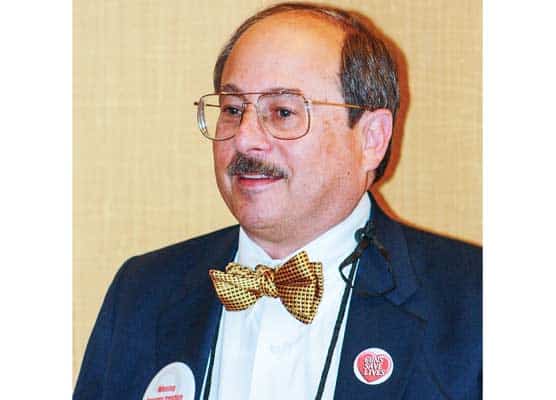Attorney Paul Clement Argues Against New York's Proper Cause Carry Requirement
Supreme Court has a Decision to Make

U.S. Supreme Court. Seated, left to right: Associate Justices Samuel A. Alito, Jr., Clarence Thomas, Chief Justice John G. Roberts, Jr., Associate Justices Stephen G. Breyer and Sonia Sotomayor. Standing, left to right: Associate Justices Brett M. Kavanaugh, Elena Kagan, Neil M. Gorsuch, and Amy Coney Barrett. Credit: Collection of the Supreme Court of the United States
Last month at this time, the U.S. Supreme Court heard oral arguments in the case of New York State Rifle & Pistol Association v. Bruen, a case challenging New York State’s egregiously restrictive concealed carry permit scheme. The ruling is not likely to come down until late June 2022.
One can tell how the arguments went by the panic that seems to be creeping through the gun prohibition movement. Paul Clement, attorney for the plaintiffs in this case, didn’t just make the case for his clients. He offered a reminder to the nine justices that shouldn’t have been necessary.
In fewer than 500 words out of the 122-page transcript, Clement eloquently cut right to the bone—nay the marrow—of what liberty is all about. Here are some excerpts from his presentation and rebuttal that perfectly frame what the Second Amendment is for.
“The text of the Second Amendment enshrines a right not just to keep arms but to bear them,” he told the court, “and the relevant history and tradition, exhaustively surveyed by this Court in the Heller decision, confirm that the text protects an individual right to carry firearms outside the home for purposes of self-defense.
“Indeed, that history is so clear that New York no longer contests that carrying a handgun outside of the home for purposes of self-defense is constitutionally protected activity,” Clement added. “But that concession dooms New York’s law, which makes it a crime for a typical law-abiding New Yorker to exercise that constitutional right.”
Clement, a partner in the firm of Kirkland & Ellis LLP at the group’s Washington, D.C. office, is a former Solicitor General of the United States, and a veteran of more than 100 cases argued before the high court. Long story short, he knows his stuff, which is why he was able to paint the Empire State’s “proper cause” (also known as “justifiable need”) into a pretty tight corner.
Right versus Privilege
New York bureaucrats have developed a nasty habit of requiring average citizens to jump through a series of time-consuming and expensive hoops in order to apply for a carry permit, which those unelected officials have routinely rejected pretty much on a whim.
As explained to the court by Clement, “New York likens its law to a restriction on weapons in sensitive places. But the difference between a sensitive place law and New York’s regime is fundamental. It is the difference between regulating constitutionally protected activity and attempting to convert a fundamental constitutional right into a privilege that can only be enjoyed by those who can demonstrate to the satisfaction of a government official that they have an atypical need for the exercise of that right.
“That is not how constitutional rights work,” the attorney stated. “Carrying a firearm outside the home is a fundamental constitutional right. It is not some extraordinary action that requires an extraordinary demonstration of need.”
A bit later on, Clement observed, “There may be limiting permitting in other contexts, like parade permitting, but I’m not aware of any context whatsoever where, in order to get a permit, you have to show that you have a particularly good need to exercise your constitutional right. And I think that is the absolute central defect with New York’s regime here.”
Of all the coverage, the Washington Post probably looked at this case from the most perspectives, ranging from common sense to absolute nonsense. Justice Stephen G. Breyer expressed concerns about “gun-related chaos.” New York Gov. Kathy Hochul describes the state law as “common-sense.” The Post also records Justice Brett Kavanaugh’s observation about allowing “too much discretion” for bureaucrats to just say “no.”
Clement's Clobbering Conclusion
Wrapping up his case, Clement hit the high court square in the collective forehead with the reality of New York’s law. Armed citizens in the 43 states with “shall issue” laws use New York as an example of extremism on steroids.
“In order to exercise a constitutional right that New York is willing to concede extends outside the home,” Clement stated, “you have to show that you have an atypical need to exercise the right that distinguishes you from the general community. That describes a privilege. It does not describe a constitutional right. That is a sufficient basis to invalidate the law.”
This case is not about guns; it’s about rights. This is what the gun prohibition lobby and its allies in state legislatures across the map stubbornly refuse to acknowledge.
Rights are special. No citizen should be compelled to offer a reason to exercise a right.
Supreme Court justices have an opportunity to correct more than a century of injustice. No pun intended, but the ball is in their court.
Remington's Move In Perspective
By now, everyone should have heard Remington is moving its headquarters from Ilion, N.Y. to Georgia, providing more than 850 jobs in the Peach State’s Troup County.
What may not be so clear is that Remington is part of a migration of sorts out of the anti-gun Northeast to more friendly surroundings in states that offer a hand in friendship rather than a bureaucratic boot on industry’s neck.
In the wake of Remington’s announcement, the National Shooting Sports Foundation put together a list of companies who have moved their operations over the past few years. It hasn’t always been from northeast to south or west. As NSSF’s Larry Keane, senior vice president and general counsel put it, “The announcement marks yet another firearm manufacturer that is investing in states that respect the Second Amendment rights of law-abiding citizens and values the contributions firearm manufacturers make to a state’s economy.”
Here are just a few examples:
- Weatherby moved out of California and is settling in Wyoming.
- Les Baer moved from Illinois to LeClaire, Iowa.
- Kimber initially expanded production facilities to Troy, Alabama and ultimately relocated its headquarters there from Yonkers, New York.
- Beretta moved firearm production and engineering from Maryland to Tennessee.
- Who can forget Magpul’s quick exit from Colorado to neighboring Wyoming after the Centennial State adopted magazine restrictions?
These just scratch the surface, but it’s an economic message to states with anti-gun governments: taking a course against a constitutional right has serious financial repercussions.
Faith Restored
Every now and then we stumble across a story that restores our faith in criminal stupidity.
According to the Seattle Police Blotter, a man walked into a convenience store on an early October afternoon and attempted to shoplift about $200 worth of merchandise. The store manger followed him outside and confronted him. The thief made a “furtive gesture,” reaching toward his jacket, inside of which the sharp-eyed manager spotted a pistol.
The shoplifter apparently tried to pull his iron but the manager slapped the pistol out of his hand, grabbed it off the ground and scrambled back inside. Now comes the fun part.
The slippery-fingered crook tried to barter with the store manager, offering to give back the stolen goods in exchange for the pistol, a .22-caliber Walther semi-auto. This happened as the manager was calling 911, so the unidentified 23-year-old suspect fled down the street.
About two hours later the cops found the suspect—wearing the same clothing he had on during the botched theft—and brought him in. He was a convicted felon.
You can bet he didn’t get that gun legally, there was no “enhanced background check” in the acquisition and he was carrying concealed without a license.




